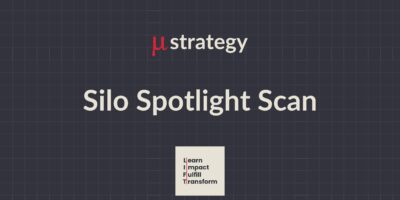Excellence in Process & Tooling within a Digital Factory is the Key to Successful Transformation
The ability to scale and continuously deliver innovation has become essential for staying competitive. This is particularly true in industries like Fintech, where digital products and platforms need to be rolled out with precision, speed, and security. Yet, how do we build and sustain such rapid product and platform evolution?
The answer lies in a concept that may seem counterintuitive to many digital leaders: thinking of your organization as a Digital Software Factory. Just as a physical factory efficiently produces goods through a well-coordinated series of processes and tools, a digital factory enables companies to create and deliver innovative products and platforms consistently and quickly.
Why a Digital Software Factory?
When we think of a high-performance factory, we envision a place where every component of production is finely tuned for maximum efficiency, precision, and quality. The same logic applies to digital products and platforms. For organizations striving to maintain zero-failure information supply chains or fast-paced fintech ecosystems, processes and tooling must be as optimized and standardized as a well-oiled factory.
Take a step back and ask yourself: Does my organization operate like a factory? Do we have the processes, tools, and culture to consistently innovate at scale?
Steve Jobs once said, “Great things in business are never done by one person; they’re done by a team of people.”
Just as a factory requires a team of engineers, designers, and operators to work together in harmony, your digital organization needs its own ecosystem of aligned processes and tooling to deliver customer delight.
Build Your Digital Software Factory Strategy
The foundation of any Digital Software Factory is a curated assemblage of processes and tools that streamline production. In the Fintech space, this factory model enables rapid product innovation, consistent quality, and measurable efficiency. These are the pillars upon which your ability to deliver value to customers depends.
In building your factory, consider how traditional manufacturing industries have long relied on industrial engineering to ensure operational excellence. The same principles of efficiency, repeatability, and quality assurance that guide physical factories must be applied to digital products and platforms.
Your Digital Factory Strategy must:
-
Harmonize processes, tools, and data to drive efficiency, quality, cost savings, data-driven decisions, and rapid innovation. Optimizing these elements, allows companies to stay competitive and consistently deliver customer value.
-
Orchestrate Automation and Agility powered by the right tools. Just as a physical factory uses machines and robotics, a digital factory relies on automated processes, measurement, and orchestration tools.
Measurable Outcomes a Digital Factory Should Yield
-
Efficiency: Streamlining processes is the backbone of a digital factory, reducing time-to-market and enhancing productivity. Think of Amazon Web Services (AWS) utilizing continuous integration and continuous delivery (CI/CD) pipelines. These pipelines automate the deployment of updates, enabling teams to roll out features multiple times a day without manual intervention. This seamless flow accelerates innovation and ensures that products are rapidly available to customers.
-
Quality: Just as physical factories maintain strict quality control, a digital factory uses standardized processes to prevent errors. For example, Toyota Motor Corporation’s Kaizen (continuous improvement) methodology translates well into the digital realm. Automated testing at each stage of development, similar to Google’s use of automated testing, ensures that software updates meet high standards, leading to consistent global product quality.
-
Cost & Investment: Optimized tooling in a digital software factory cuts costs by automating repetitive tasks, freeing up resources for innovation. Take Netflix, which automates its cloud infrastructure management, significantly reducing operational expenses. This allows for more investment in cutting-edge content, showing how cost efficiency supports reinvestment in core areas that drive business growth.
-
Data-Driven Decisions: A well-run digital factory collects and analyzes data at every stage of production. For instance, Spotify tracks user behavior to understand how features are used, and then adjusts its product offerings based on that data. This ensures resources are invested in the most impactful areas, aligning product improvements with customer needs and maximizing ROI.
-
Innovation: Agile tooling and robust analytics fuel the experimentation and prototyping that are key to continuous innovation. Tesla provides a great example with its over-the-air updates, which allow the company to release new features or fixes directly to their cars. Tesla’s ability to gather real-time feedback and refine its products on the go highlights how digital software factories can accelerate innovation while keeping customers engaged.
Application: Toyota Production System
The Toyota Production System (TPS) is a gold standard for optimizing quality and efficiency through lean manufacturing and waste reduction. These principles are highly relevant to digital factories. In fintech, similar methods can eliminate bottlenecks in software development. By automating code reviews and streamlining deployment pipelines, companies can ensure that each iteration improves on the last, mimicking Toyota’s focus on continuous improvement.
Toyota’s just-in-time (JIT) production model can also be applied to digital environments. JIT ensures that resources are used efficiently by delivering updates and changes exactly when needed. Similarly, CI/CD processes ensure that software is deployed precisely when ready, reducing downtime and minimizing waste.
Application: Amazon’s Digital Factory
Amazon’s success is a clear example of how automation and a factory-like process drive innovation and efficiency. Using CI/CD pipelines, Amazon deploys small updates automatically, ensuring that its products evolve without causing disruptions. These practices allow Amazon to maintain a fast pace of innovation while delivering a consistent and reliable customer experience.
Amazon’s mastery of automation, paired with its leadership in cloud services, enables it to scale globally. The integration of automation and agility into its digital factory is a key reason Amazon can handle massive amounts of data and customer requests without interruptions.
Jeff Bezos captures this approach with his principle: “We are stubborn on vision. We are flexible on details.”
This perfectly encapsulates the importance of having a long-term strategic goal while maintaining agility in execution—a vital element of any successful digital software factory.
In essence, the Digital Software Factory model, powered by agile processes and automation, is a powerful tool for delivering consistent, high-quality, and innovative products that meet evolving customer expectations.
Frameworks to Guide Process & Tooling Decisions
A well-functioning Digital Software Factory is not built by accident. It requires a deliberate, structured approach to designing processes and selecting tools. Here are some frameworks that leaders can use to ensure their digital factory operates at peak efficiency.
1. Lean Software Development
The principles of Lean—which emphasize value, waste elimination, and continuous improvement—are highly applicable to digital software factories. Lean software development encourages teams to build only what is necessary, reducing excess features and ensuring that each new addition provides tangible value to the customer.
Application: At Fintech firms like Revolut, the Lean approach is used to develop features that meet the immediate needs of customers while eliminating unnecessary complexity. Instead of trying to build a “perfect” product, Lean focuses on rapid iterations, constantly collecting feedback to improve the offering.
2. Secure Software Factory Reference Architecture (SSFRA)
In industries like Fintech, where security is paramount, a Secure Software Factory is critical. The Secure Software Factory Reference Architecture (SSFRA) focuses on creating a secure environment where code provenance, artifact analytics, and defense-in-depth principles are embedded into the software development lifecycle.
SSFRA Principles Include:
-
Defense in Depth: Multiple layers of security safeguard the integrity of code and products.
-
Signing and Verification: Ensures that every piece of software and artifact in the pipeline is signed and verified to prevent unauthorized changes.
-
Automation: Security checks are automated, reducing the burden on developers and ensuring consistent protection.
Application: For Fintechs implementing a secure digital factory using SSFRA principles allows them to move fast without compromising on the safety of user data and financial transactions. By embedding security into their factory processes, they build trust with their customers while keeping ahead of regulatory requirements.
3. Six Sigma for Digital Processes
Six Sigma, a process improvement framework focused on reducing defects and variability, is another valuable tool in the digital software factory. While originally developed for manufacturing, Six Sigma’s focus on data-driven decision-making and process optimization can greatly benefit digital teams.
Application: GE used Six Sigma to drastically improve operational efficiency and product quality. In the digital space, Fintech firms like PayPal apply Six Sigma principles to reduce downtime, ensure seamless transactions, and minimize bugs, all while enhancing user satisfaction.
Processes rely on Culture: Embed a “Factory” Mindset
Building a digital software factory is not just about selecting the right tools or designing efficient processes. It’s about fostering a culture that embraces continuous improvement, collaboration, and accountability. When processes and tooling are aligned with a factory-like mindset, they don’t just improve efficiency – they create an environment where innovation thrives.
In Fintech, this means empowering your teams to take ownership of their part in the production line. Whether it’s developers deploying new code, product managers refining the customer experience, or security engineers safeguarding your platform, each team member plays a vital role in the overall process.
As Tim Cook of Apple has said, “Let your joy be in your journey – not in some distant goal.”
The process itself, when thoughtfully designed, should empower teams to work joyfully and efficiently, knowing they’re contributing to something greater than just hitting a release deadline.
Deliver Customer Delight Through Your Digital Factory
In the world of digital transformation, where Fintech firms are constantly innovating and pushing the boundaries of what’s possible, the Digital Software Factory is an invaluable asset. It enables organizations to deliver consistent, high-quality products and platforms while remaining agile and responsive to customer needs.
By embracing frameworks like Lean, Six Sigma, and Secure Software Factory principles, leaders can create a robust and resilient digital factory. When processes and tools are aligned with business objectives, companies are better positioned to innovate quickly, delight customers, and stay ahead in a competitive market.
The question is: How well does your Digital Software Factory perform?
If your current processes and tooling are not delivering the speed, quality, or innovation you need, it’s time to rethink your strategy. By adopting the right frameworks and aligning them with your specific goals, you can transform your digital operations into a factory that delivers measurable, repeatable, and scalable success.
How will you streamline your digital processes and tooling for success?
We are all doing our best ~ please Assume Positive Intent!
Let me know how I can help.
Adi








Comments